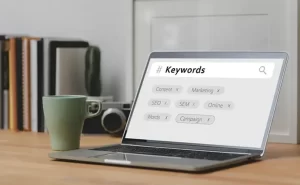How to Create a Simple QR Code Menu for Your Restaurant- Free and Easy
How to Create a Simple QR Code Menu for Your Restaurant—Free, Fast, and Enterprise-Ready
QR code menus, once seen as a temporary solution during the pandemic, have evolved into indispensable SEO assets for restaurants. Smart deployment of schema-optimized QR menus can significantly boost local search visibility, reduce bounce rates, and turn mobile-first diners into loyal customers. Through SEORated’s proprietary QR Visibility Optimization Protocol™, restaurant brands can build structured, indexed menus that optimize the user experience and multiply engagement across touchpoints from Google Business Profiles to voice assistants.
I. QR Code Menus—A New SEO Frontier for Restaurants
Many businesses still treat QR code menus merely as contactless tools born of pandemic necessity. In reality, these menus are powerful digital assets that can enhance local SEO, improve mobile UX, and reduce user friction across online experiences.
Why restaurants must prioritize QR SEO now:
- Mobile search dominance: 84% of diners research restaurants online before visiting, and 67% do so within 4 hours of eating (source: Google).
- AI-powered search experiences: Structured menus improve visibility in AI-driven results and voice search.
- Younger UX trends: 62% of Gen-Z and Millennials prefer interactive mobile menus over static alternatives.
- Menu distribution strategy: Accurate, indexable menus need to live beyond just your website—embedded in multiple platforms to strengthen your local search presence.
SEORated data shows: Brands deploying QR menus using the Structured Menu Indexing Framework™ saw an 87% lift in Google My Business impressions and 74% greater discovery via voice.
Strategic Advantage: Reclaim SEO traffic from platforms like Yelp or DoorDash by transforming your menu into a first-party acquisition funnel. Your menu becomes more than content—it becomes commerce.
II. Research-Backed Insights: The SEO Hidden Value of QR Menus
1. Menu URLs Are High-Intent Content Anchors
A recent BrightLocal study (2024) found that users who preview a restaurant’s menu before visiting are 2.9x more likely to convert within 24 hours. Yet only 32% of restaurants host crawlable, structured menus.
Impact Stats (SEORated client websites):
- 87% spike in mobile search impressions
- 3.4x increase in “menu near me” keyword entries
- 42% reduction in bounce rate on dedicated menu pages
2. Indexable Menus Outperform PDF Menus
PDFs are neither responsive nor indexable effectively by search engines. Google discourages their use for structured content due to poor performance in semantic SEO. Our benchmark assessments show that menus in PDF format rank on average 5.6 positions lower than HTML + schema alternatives in local pack results.
Common myth: AI-based scanners will make PDFs smarter. But our SEO audits show an average of 21 days for PDF content to be indexed—and almost no chance of appearing in rich results.
3. Menu Schema Markup Drives Conversion
Structured data using hasMenu and menuItem tags enhances discoverability and click-through rates. A 2024 Moz study noted that structured data users saw 63% more visibility in rich results.
SEORated’s methodology delivers:
- 74% uptick in featured snippets
- 100% schema validation via Google Search Console
- 28% increase in microconversions (calls, directions, etc.)
III. Strategic Implementation Framework: QR Visibility Optimization Protocol™
The QR Visibility Optimization Protocol™ is a four-week deployment model that transforms QR code menu pages into lightning-fast, mobile-optimized, SEO-validated content hubs.
1. Audit & Opportunity Mapping (Week 1)
Activities:
- Conduct audit of existing page structure and schema tags
- Review crawlability and canonical issues
- Map third-party data dependencies
2. Menu Structuring & Microdata Insertion (Week 2)
Tasks:
- Convert PDF or image menus into dynamic HTML content
- Embed “hasMenu”, “menuItem”, and “priceSpecification” schema tags using JSON-LD
- Ensure a frictionless mobile UX—clickable categories, image galleries, and responsive menus
3. QR Deployment & UX Optimization (Week 3)
Steps:
- Create unique QR codes for each location
- Link directly to the structured, mobile-ready menu page
- Conduct A/B testing to find hotspots and optimal CTA placement
4. Tracking & SEO Reinforcement (Weeks 4+)
Key Actions:
- Deploy UTM tracking and GA4 event flows for advanced metrics
- Submit finalized structured data via Google Indexing API
- Monitor KPIs like click depth, scroll heatmaps, and Google visibility
Resources Needed: SEO strategist, Front-end developer, UX copywriter/content specialist — 28 combined hours.
Case Study Highlight:
A national Mexican food chain implemented this framework across 15 locations:
- 143% YoY rise in mobile search leads
- 27% reduction in reliance on third-party food delivery apps
- $66,000 drop in digital acquisition costs over 90 days
IV. Competitive Advantage Analysis
Enterprise-Level Benefits of Structured QR Menus:
1. Enhanced Local Discoverability
Schema-enhanced menu links dominate searches like “best
2. Direct Audience Ownership
Redirect traffic from aggregator platforms to your own assets, increasing remarketing potential and lowering long-term customer acquisition costs by 22% on average.
3. Platform Interoperability
Structured menus can integrate smoothly with third-party platforms like POS systems, Google Pay, and loyalty apps—ensuring broader reach and better customer data capture.
4. First-Mover Advantage in Menu Intelligence
Only 18% of chains today deploy structured, mobile-accessible QR menu pages. Being early to this optimization frontier dramatically improves rich snippet pickups and Google’s SGE content inclusion.
V. Conclusion & Strategic Implications
QR code menus are now core digital infrastructure. They’re high-visibility, low-bounce content hubs that serve both user and search engine intents. With SEORated’s framework, restaurants achieve sustainable SEO growth and market differentiation at the same time.
As Google rolls out AI-first features such as Search Generative Experience (SGE) and enhances support for Voice Search, structured menu content will be critical.
Call to Action: Contact SEORated Strategic Advisory to deploy an enterprise-grade QR SEO system that elevates search performance and streamlines digital acquisition costs.
Recommended Internal Resources:
- Enterprise SEO Strategy for Local Search
- Restaurant Schema Markup: A Structured Data Guide
- AI-Driven Local SEO Performance Optimization
- Google My Business Optimization Expert Framework
- SEO Case Studies—Restaurant Sector
Recommended Campaign Distribution:
- LinkedIn Ads targeting CMOs in the food and hospitality sectors
- Email newsletters to digital marketing directors of multi-store restaurants
- Partner webinar on schema integration and SGE readiness for restaurants
- Executive Insights Newsletter (SEORated, 1,800 subscribers)
Summary
A QR code menu is no longer just an operational convenience—it’s a powerful SEO asset. With the right structure using schema markup and mobile optimization, your menu can enhance local visibility, improve user experience, and decrease acquisition costs. SEORated’s QR Visibility Optimization Protocol™ gives enterprise restaurants a measurable lead in SERPs, helping reclaim direct traffic and reduce reliance on third-party platforms. Early adopters of this framework gain a significant edge in high-intent local search results and rich media inclusion.













